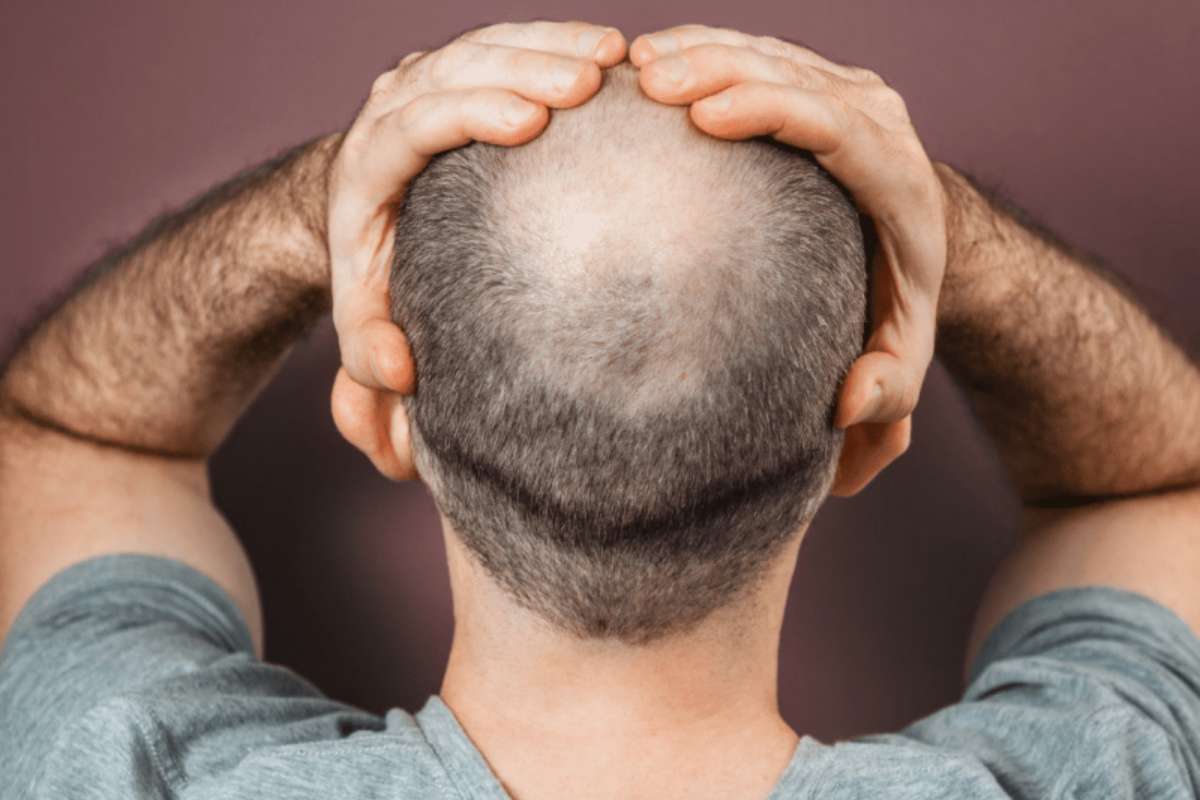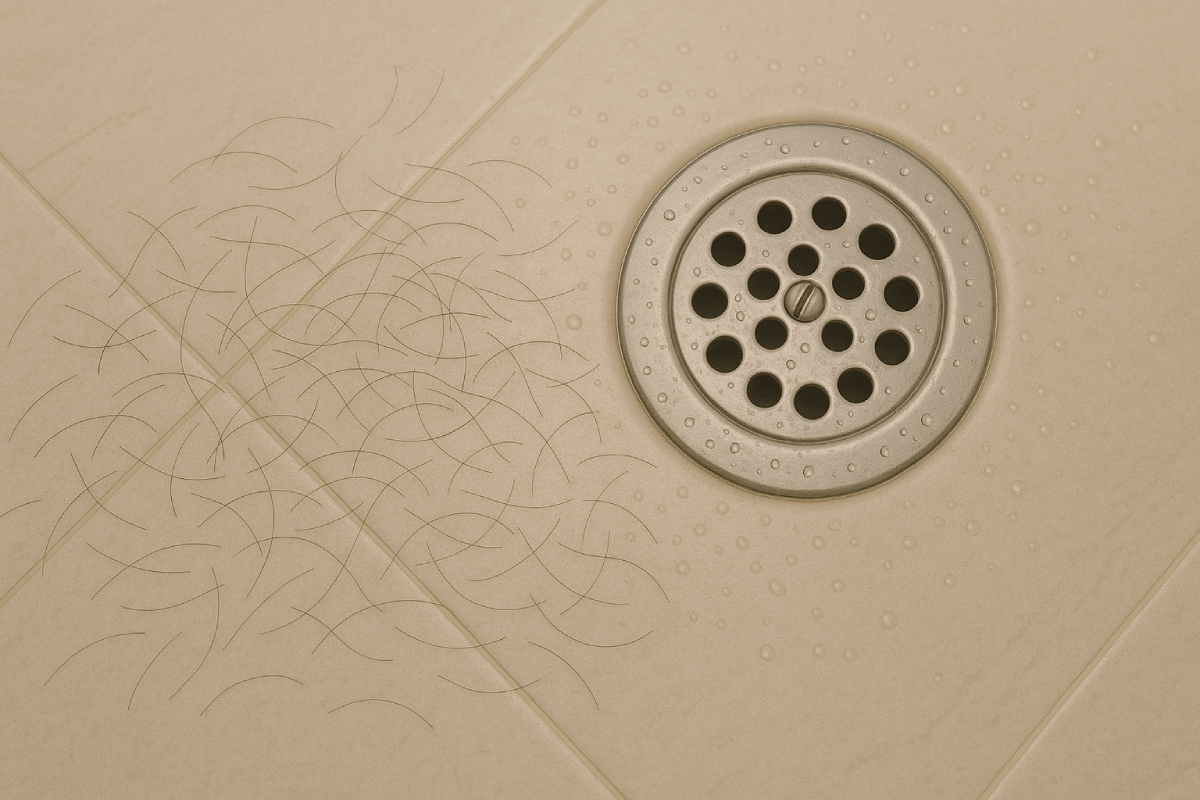Minoxidil is a great treatment for hair loss, but it is not safe for your pets. Cats are at the highest risk, and even a small lick can cause serious problems that can become fatal if not treated. In addition to cats, dogs and small pets can be at risk, too, especially if they swallow it.
If you use minoxidil at home, it’s important to understand how your pets can become exposed, what warning signs look like, and how to keep your home safe. This article explains the risks when it comes to minoxidil and your pets and what you can do to help prevent your animals from becoming sick.
Why Minoxidil Can Put Pets in Danger
Minoxidil is made for people, plain and simple. It typically comes as a liquid or foam you put on the scalp or, for some patients, as a pill taken by mouth. Trouble with this starts when curious pets find the product or touch you before it has dried.
Common ways pets are exposed to minoxidil:
- Licking your scalp or beard soon after you apply it
- Walking through a spill and then licking paws
- Chewing a bottle or foam can
- Drinking from a sink or counter where drops land
Topical solutions are strong, often 2% or 5%, and for a small animal, even a tiny taste can be a big dose.
How Minoxidil Harms Cats
Minoxidil works in humans by helping to widen blood vessels. In people, this can lower blood pressure in a controlled way. However, in cats, the drop can be sudden and unsafe. The heart has to work harder, and fluid can build up in or around the lungs. This can lead to breathing troubles, among other issues.
Cats can get sick quickly after coming in contact with minoxidil, sometimes within 12 to 24 hours. Early signs may be easy to miss, so it helps to know what to look for and act fast.
Symptoms to Watch for in Cats
Early signs:
- Lethargy or weakness
- Skipping meals
- Vomiting or drooling
Serious signs:
- Fast or hard breathing
- Open-mouth breathing or panting
- Coughing or noisy breathing
- Pale or bluish gums
- Wobbliness, collapsing, or not wanting to move
These serious signs point to heart and lung stress, and your cat needs urgent care right away.
Are Dogs and Other Pets at Risk?
Yes, dogs are usually less sensitive to the effects of minoxidil than cats, but they can still get sick, especially after a larger dose. A dog that chews a bottle or licks a big spill can develop vomiting, drooling, weakness, low blood pressure, unsteadiness, or even loss of consciousness.
Small pets like birds, rabbits, and ferrets have tiny bodies and faster metabolisms, so a couple of drops can be a large dose for them.
To be cautious, treat minoxidil as unsafe for all pets, and keep it in a place where your animals are not likely to get exposed.
Why Cats Are So Sensitive to Minoxidil
Cats do not process certain chemicals the way people and dogs do. Their livers lack certain enzymes that help break down these drugs, which can lead to adverse effects when exposed.
Cats also groom themselves more frequently which leads to more ways they can become exposed to the toxic medicine if it’s not properly stored. This means that it’s possible for a cat to become exposed if you have minoxidil on your hands and you pet your cat and then the cat begins to groom itself, so be cautious when using minoxidil in a home with cats and pets.
Safety Tips if You Use Minoxidil at Home
You can lower the risk with a few simple habits.
- Store it safely: Keep minoxidil in a closed cabinet or drawer your pets cannot open.
- Apply in a pet-free room: Close the door. Put the bottle away right after use.
- No contact until dry: Do not let pets rub or lick your scalp or beard until the product is fully dry. If you apply at night, keep cats out of the bedroom or wear a head covering.
- Wash up and wipe up: Wash your hands after applying. Clean any drips or residue right away with a pet-safe cleaner.
- Secure the trash: Seal used cotton, gloves, and empty containers in a pet-proof bin.
- Control sprays: Use sprays over a sink or shower so mist does not settle on surfaces pets can lick later.
The goal is simple: remove every chance for licking, chewing, or walking through residue. Some pet owners prefer to use the oral version of minoxidil to limit the risk of pet exposure.
What To Do If Your Pet Is Exposed
Act quickly. Fast care can save a life.
- Rinse the fur or paws now if product touched your pet. Use warm water and a pet-safe shampoo.
- Call your veterinarian or a poison helpline right away, even if your pet looks fine.
- Go in for care without waiting for breathing trouble or collapse. Vets can support blood pressure and breathing and treat fluid in the lungs if needed.
- Bring the details: Take the bottle and be ready to share what happened, when it happened, and any other medicines your pet takes.
When to Seek Emergency Care
Get urgent help if you see fast or hard breathing, open-mouth breathing, pale or blue gums, nonstop vomiting, severe weakness, wobbliness, or collapsing. These are medical emergencies.
Protect Your Cats from Minoxidil
Minoxidil is toxic to cats and can be harmful to other pets, but with careful storage and smart use, you can lower the risk at home. If you think a pet was exposed, call a vet right away. Quick action gives your pet the best chance to recover.







